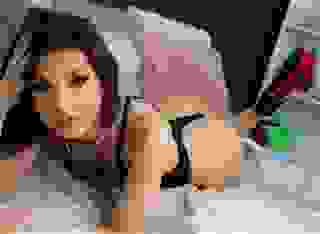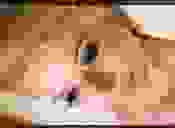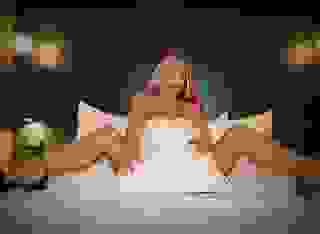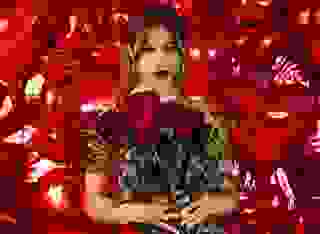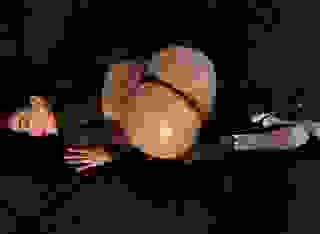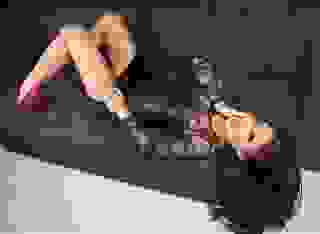Note: You can change font size, font face, and turn on dark mode by clicking the "A" icon tab in the Story Info Box.
You can temporarily switch back to a Classic Literotica® experience during our ongoing public Beta testing. Please consider leaving feedback on issues you experience or suggest improvements.
Click hereOne by one, overhead lights went dim, control panels winked out, and hatches leading to the surface hissed closed and locked, their rock camouflages grinding into position. And once all was complete...
"Deactivate simuloid until outer warning guard is breached."
Losira-Sim flattened out into two dimensions, thinned to a single line of matter, and then shrank into nothing.
The overhead monitoring cube hummed an almost silent tone, its swirling lights and the dim lighting from the defenses console the only illumination in the now quiet, empty room. The computer standing in mute isolation... waiting.
* * *
"It's really sad, you know?"
"C'mon, we've seen and heard our share of extinction stories."
"It's still depressing, Mike; waiting all that time for a ship that would never come."
"I know, I know... but there's nothing anyone can do now. They're gone, but we can still learn about them from what they left behind."
It was the third time Fisher tried to console Le Roy with this statement, he being the practical one and his friend the sentimental type.
After the Enterprise sent its report on the Kalandan outpost, long abandoned and left empty for an estimated ten thousand years, Star Fleet Command wasted no time in investigating the artificial planetoid. They dispatched the U.S.S. Bridger and Crockett, two of the Hermes class scout ships, along with all the science and engineering personnel they could carry to the outpost for study. They felt that fully equipped scout/science vessels could analyze the planetoid more efficiently than one Constitution class starship, and also added the fact that the Enterprise had a patrol schedule to keep. Once Fisher and Le Roy beamed down from the Bridger, along with one hundred and sixty others from both scouts, they were all over the station immediately, like bees on pollen.
After a few days, the Bridger reported to Command that they would need more support in order to cover the vast station and all it contained. Star Fleet answered with one of the new Coventry class cruisers, the Coventry herself, loaded down with the latest scientific equipment and all the science personnel it could hold.
Le Roy joked a little about the new cruiser design, poking fun at it saying, "It almost looks like one of the Ptolemy class transport tugs." with its warp nacelles slung just beneath its extended primary hull.
"Ah, it doesn't look that bad, Frank," Fisher had retorted, "Wait till they add the weapons pod on top of it, then it'll be something to see. They're planning that for that new Miranda class ship they've been gossiping about."
"You just want them to add that roll bar for looks," Le Roy chuckled, "We've got enough ships as it is loaded down with weapons, already."
Fisher just shrugged, smiling, "Say what you will, but you just wait; the new refit designs I've seen on the engineering comm net updates are going to blow everyone away."
"I have seen some of them; they're going to need better materials to work with, what with that new warp nacelle design they have in mind."
"Why do you think we're here?"
Le Roy smirked, "Good point," then rolled his eyes at the schematics he had seen, "I still say they look like weird, skinny toothpicks all lit up to look pretty."
Fisher just laughed, "Always clinging to the old, traditional stuff; Francis, my friend, you're too much of a romantic."
They both laughed as they went back to the tasks at hand.
Fisher, being the engineering specialist, was diving into the inner workings of the station checking over controls consoles, power relay systems, and especially the materials used in creating the outpost in the first place. Almost one hundred other engineering team members were doing the same, going over the station with finely tuned tricorders and scanners inch by inch, but Fisher had the honor of analyzing the metal the Kalandans used to build the station.
The rust red colored metal was a composite alloy, a combination of diburnium and osmium. The diburnium was extremely resistant to weapons' fire due to its dense molecular structure, and was rarely found in that section of explored space until recently. Osmium was common enough; it was used mainly for the primary shielding in warp nacelles, among other vital areas of starships.
But when combined, the alloy produced a new element that, if not removed, would reach toxic levels over a period of time and slowly migrate out of the alloy to affect its surroundings. The migration would disrupt the composite's atomic structure, making the alloy unstable and dangerous. The alloy would stabilize itself once the toxins were gone, but on its own it would take a considerable amount of time to reach that point, on the order of centuries if not longer.
"They didn't realize the affects diburnium and osmium would have if the toxins weren't removed," Fisher muttered.
As advanced as they were, he really couldn't blame the Kalandans for the oversight. Because of its extremely slow growth rate, the toxic element could easily be missed if you didn't know what to look for. Federation scientists learned that lesson long ago, and learned it the hard way, when they first experimented with the two metals. They too unknowingly created the toxin when the alloy was produced and they had discovered it, and an anti-toxin to combat it, before it could do massive harm. But they didn't discover it in time to save the two hundred and nine scientists, technicians, and students that were infected and died as a result of their experiments. A tragic event, but a 'learning experience', none the less.
Force field attractor equipment and repulsor beam technology was used in removing the toxins from the alloy. They could be disposed of rather simply, but Star Fleet Command's science division had deemed the process 'impractical' because of the months it took to extract the dangerous element. Now with improved techniques, it was just a matter of hours to make the alloy safe and with this, Star Fleet was 'reconsidering' the element's use in their new engine designs.
But the toxic element had already done its damage there at the outpost; the deadly organism it produced when it bonded with organic compounds was still imbedded in the vegetation. This was Le Roy's part of the investigation.
The bioscience specialist, along with his friend, was now on the surface analyzing the meager plant sprouts that dotted the soil while Fisher examined the rock formations after checking out the station's interior. Having been inoculated with the anti-toxin before leaving the scout ships, he and the rest of the landing parties were safe from the deadly effects of the element.
"The reports were right," Le Roy uttered, "This organism is all over the place; the plants, the soil... and none of this vegetation should be here." He held out a few of the sprouts to Fisher, his friend's dark brown skin and black hair contrasting sharply with the bland beige coloring of the plant stalks, almost the same color as his own hair, "A couple science team members reported the same thing the Enterprise's geologist found, and it's the same thing I'm getting on my tricorder: there hasn't been any rainfall on this planetoid to promote vegetation growth... ever! Even the rocks show signs of water erosion, and they shouldn't!" Le Roy dropped the plants in exasperation.
Fisher nodded in agreement as he carefully scrutinized a small part of a rock formation, "Their chief science officer surmised the same thing their landing party did: the whole surface is manufactured camouflage; it's all fake, even the dirt."
The science officer aboard the Enterprise discovered that the planetoid was only a few thousand years old, almost twelve thousand according to the Crockett's sensor readings. The blink of an eye, time wise, considering it took billions of years for planetary bodies to form much less create a viable life sustaining atmosphere and surface. It was approximately the size of Earth's moon, and the science officer had deemed it 'impossible' for such a small body to develop a Class M atmosphere and indigenous plant life in such a relatively short period of time.
Le Roy added, "I think their chief medical officer was right about his theory, too."
The Enterprise's chief physician, another member of the landing party, surmised that the Kalandans must have contracted the disease when they were delivering supplies during and after the station's construction. The supply ships unknowingly carried the disease back to their home territory and infected others, spreading it throughout their sphere of influence from their colonies to their home world, and effectively destroying their civilization over the course of many years. Losira, or rather her recorded image, had been waiting thousands of years to deliver her greeting to a great people who were now extinct, and had been for centuries.
"Like I said," Fisher said somberly, "we've seen it before. That race of insectoids in the Elindrum sector; their territories covered a vast area of space, according to the records the archeologists found on their home planet. Maybe the same thing happened to them."
"Maybe," Le Roy muttered back as he adjusted his tricorder to replay the readings it recorded so far, "The Kzinti's historical records mentioned something about a 'plague' that nearly wiped them out, too. I wonder if it was the same type of disease the Kalandans contracted."
"We'll never know, Frank. It happened so long ago, even the Kzinti don't remember. And as far as the Crykk'tyr'ns go," Fisher shrugged a shoulder, "There aren't any more of them left to ask."
"Was there any record left behind mentioning other species visiting this place?" asked Le Roy with a lilt of hope in his voice.
But it was extinguished when Fisher shook his head, still picking away at that certain spot in the rock face with precision examination tools, and answered, "I'm afraid not. The computer analysis teams found the computer equipment not functional because of non-use, with the exceptions of the imaging processor and the defense grid controls. Their transporter array worked, but just barely. I would've loved to have been on that investigation team." Fisher smiled to himself at the thought of getting into the guts of such a sophisticated, technological marvel as the Kalandans molecular transport array.
"But all the logs and recordings made here had degraded to the point of 'non-retrievable' status; there are a few technical logs left somewhat intact, but the whole record of their time here... gone. They should have done what the Crykk'tyr'ns did: recorded their data and logs on some kind of hard copy, like... what's that stuff called again? Paper?"
Le Roy huffed out a laugh and answered, "Yes," in a rolled eyed, exasperated voice.
"Right, paper. The Crykk'tyr'ns were smart; some of their records survived that way."
Le Roy raised an eyebrow to him, "That's right, Mike; the old tried and true, 'traditional' methods. Now who's the one being a romantic?"
Fisher conceded the point with, "Okay, you got me with that one."
Le Roy chuckled, knowing he scored a point for 'traditionalism', and then stared at what his friend was looking and digging at, "What exactly are you looking for? I thought you were finished with the alloy analysis."
"I am," Fisher answered as he managed to break away a good size chunk of the false rock. He couldn't get at the super strong alloy that made up only part of the formations, but the composite material that was thrown together to look like rock flaked away from the surface with little effort. "This is something else, something just as important."
"What is it?"
Le Roy stepped back a bit as Fisher finally managed to chip away a piece of the 'rock' in order to reveal the entire component he knew was there. Gesturing with a wave of his hand, he said, "This... is a tractor beam emitter."
Le Roy's eyes widened and peered more closely at the silvery reddish mesh of metal pieces and small pipe-like conduits connected to it, "Get outta here! That small?"
"We make 'em smaller than that for surgical instruments," Fisher countered.
"Yeah, but why would you put something like this out here?" Le Roy waved an arm around to encompass the outdoor surface.
"To operate their sentries."
Le Roy matched Fisher's smug smile with his own confused one.
"I went over their imaging processor units," Fisher explained while he waved his tricorder over the now exposed emitter, "They're capable of creating automatons from the scanned templates of the station's personnel; that was in one of those 'somewhat intact' technical logs I mentioned. They're like mannequins, simple forms of matter held together by tractor beam and force field manipulation," he pointed to the device in the rock, "and this is one of the emitters used to control them. I traced the power conduits' paths all the way out here; there are millions of these things all over the place, even inside the station, too."
Le Roy glanced at the readings being digested on his friend's tricorder and said, "The earlier reports said that the image that attacked them was resistant to phaser fire, just like the alloy."
Fisher nodded, "The main defense computer could alter the density of the sentry, making it almost invulnerable to weapons' fire. And it could transmit an energy burst that would disrupt cell structures."
"Yeah, I read that too. That's how some of their crew died; every cell in their bodies was exploded from the inside out," Le Roy shuddered at the thought of such a gruesome death, but couldn't think of any good way to die either. "But how the Hell did their computer manage to get one of those things aboard their ship, and at almost a thousand light-years distant?"
"Nine hundred and ninety, point seven light-years, Ensign," came the correction from behind the pair of specialists, who snapped to attention as Commander Tovan approached, "You must be more precise in your facts if your investigation is to have any merit."
Le Roy nodded to his superior, the Bridger's chief science officer, "Yes, sir."
"As you were, gentlemen," Tovan then addressed Fisher, "Please continue, Lieutenant; do you have a theory that would explain such an occurrence?"
"I do, sir," he answered, returning his tricorder to the emitter, "I believe the computer used the transporter array to sent one of its sentries to the Enterprise. If it's capable of flinging a starship that far away..."
Tovan nodded, "I concur, Mr. Fisher. This is the current theory the team investigating the array agree upon, as well."
"But why didn't the array send the Enterprise away when it returned?"
The Vulcan turned to the young Ensign and answered, "It would appear that the array ceased to function after it retrieved its sentry. Because of its dormant state throughout the centuries, and due to the absence of any engineering personnel and lack of proper maintenance, the array fell into disrepair. I surmise that was reason for the Enterprise being reassembled slightly out of phase after transport."
After getting their bearings, the Enterprise crew checked the ship for any damage and, finding none, they headed back to the planetoid at top speed. However, their chief engineer wasn't quite convinced that the ship was in working order and reported the 'feel' of the vessel was wrong. While repairs were being made to the engines that were sabotaged, the science officer scanned the ship, comparing its present condition to its ideal one, and found the phase discrepancy.
"The final use of power to the array damaged the already degraded components of its inner mechanisms and rendered the entire system useless, practicality-wise. The investigating team is still examining the device for future study, but the array itself is no longer functional. And I presume due to its age and degradation, will remain in that state."
"That," Fisher said sadly, "is a loss, Mr. Tovan."
Tovan had to agree, "An incalculable one, Mr. Fisher, however the examinations of the mechanism itself, as well as the other findings here, should prove to be most interesting and valuable to science division at Star Fleet."
"Like this one," Fisher pointed to the emitter, "With your permission sir, I'd like to continue studying this component and its main systems; I believe it warrants further analysis."
Tovan perused the readings being recorded on Fisher's tricorder and raised an eyebrow, "Fascinating... very well, Mr. Fisher; you may proceed with your analysis, provided it is approved by your superior."
"My full report on the alloy has been sent up to Bridger along with the rest, sir," Fisher then grinned, "and I'm certain Chief Engineer Farnsworth will approve. It'll take years to go over the data I'll be collecting."
"Indeed; a complex engineering challenge, to be sure," Tovan then turned his attention to both officers, "But I'm afraid further investigations will have to wait. Captain Cho feels we should... "call it a day" as he puts it. You may continue your analyses tomorrow morning, gentlemen."
Fisher and Le Roy smiled at that and packed up their equipment, readying it for transport.
"Just think about it, Frank; the things we could do with this technology."
"Like what? Make fake people?"
"Exactly. Right now, we use simple holographic images to change appearances... like in the Recreation Room. But they're just images, nothing more," Fisher pointed back at the emitter, "But with something like that, you could make an actual, solid re-creation of something, or someone. You could change the shape of an object to resemble anything; a rock, a tree, even a fictional character out of a book. You could re-create whole different scenes, if the room you put the components in was big enough; forests, meadows, beaches, different worlds whether real or imagined... your own bridge where you get to be the captain! The possibilities are endless!"
Le Roy didn't want to put a damper on his friend's enthusiasm, but he had to interject a bit of reality, "Mike... developing something like that in our lifetime?"
Fisher just shrugged, "Probably not, but I'm gonna have a lot of fun getting there. This little gem," again, he gestured at the emitter, "is a thing of beauty."
"The Bridger is ready to beam us up, gentlemen; stand by."
All three officers stood ready for their trip, their packed equipment ready for transport.
Before he signaled for beam out, Tovan turned to Fisher and said, "I have found that 'beauty' is often transitory, Lieutenant."
Fisher grinned and replied, "In this case, I respectfully disagree, sir," and stole once last glance at the little marvel in the rock face, just waiting to be examined with loving care, "Even here, after all that's happened, beauty... survives."
Tovan raised his eyebrow again, flipping open his communicator, and had to admit that Fisher did have a valid point, however illogical it may be.
"Tovan to Bridger; three plus equipment to beam up."
"Transporter Room, acknowledge; ready for transport, Commander," was the reply.
"Energize."
The three men, along with their gear and the big smile still plastered on Fisher's face, marking an excited eagerness to return, disappeared into the sparkling quantum mist of the transporter beam.
- COMMENTS
